The Benefits of Contrast Therapy: Sauna + Cold Plunging for Health and Wellness
More than just a recent trend, contrast therapy is an ancient nordic health and wellness practice that has been happening way before us.

What is Contrast Therapy?
Contrast therapy, the practice of alternating between hot and cold treatments like sauna sessions and cold plunges, has gained attention for its impressive health benefits. Rooted in ancient practices, it involves immersing the body in high heat (typically a sauna) followed by a cold plunge. This form of hydrotherapy is embraced by athletes, biohackers, and wellness enthusiasts worldwide.
I personally started cold plunging about 2 years ago. Being outside constantly during the Minnesota winters, I knew I had to do something to get my body more used to the cold. Like a cat, I dislike water and being cold and so what do you do when you don’t like something, or even fear it? You do more of that one thing, until you become more comfortable.
So what exactly are the benefits of this temperature contrast, and how does it work? Let’s get into it, shall we?
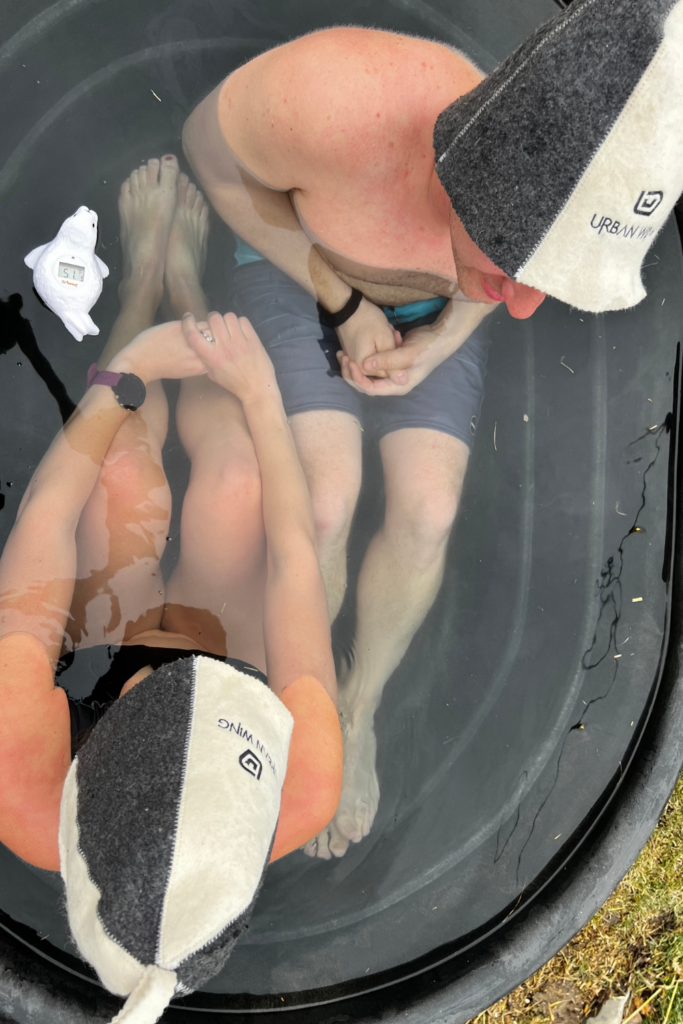
Reap the Benefits of Contrast Therapy
Contrast therapy, through sauna and cold plunging, offers numerous physical and mental health benefits. Whether you’re looking to improve recovery, boost your immune system, or just experience deeper relaxation, this ancient practice holds transformative potential for your overall well-being.
1. Boosting Circulation and Reducing Inflammation
The sharp change in temperature stimulates the body’s blood vessels. Heat from the sauna causes blood vessels to dilate, while the cold plunge constricts them. This constant expansion and contraction cycle boosts circulation, delivering oxygen-rich blood to the body’s muscles and organs, improving recovery and reducing inflammation.
2. Enhancing Muscle Recovery
Athletes are drawn to contrast therapy for its powerful impact on muscle recovery. The increased blood flow from alternating temperatures helps remove metabolic waste products like lactic acid from muscles. This helps alleviate soreness and accelerates the body’s ability to recover after strenuous physical activity.
3. Strengthening the Immune System
Sauna sessions increase core body temperature, mimicking a fever and stimulating the immune response. Cold plunges, on the other hand, boost white blood cell production, which strengthens the body’s defense against illnesses. Consistent contrast therapy can lead to an overall stronger and more resilient immune system.
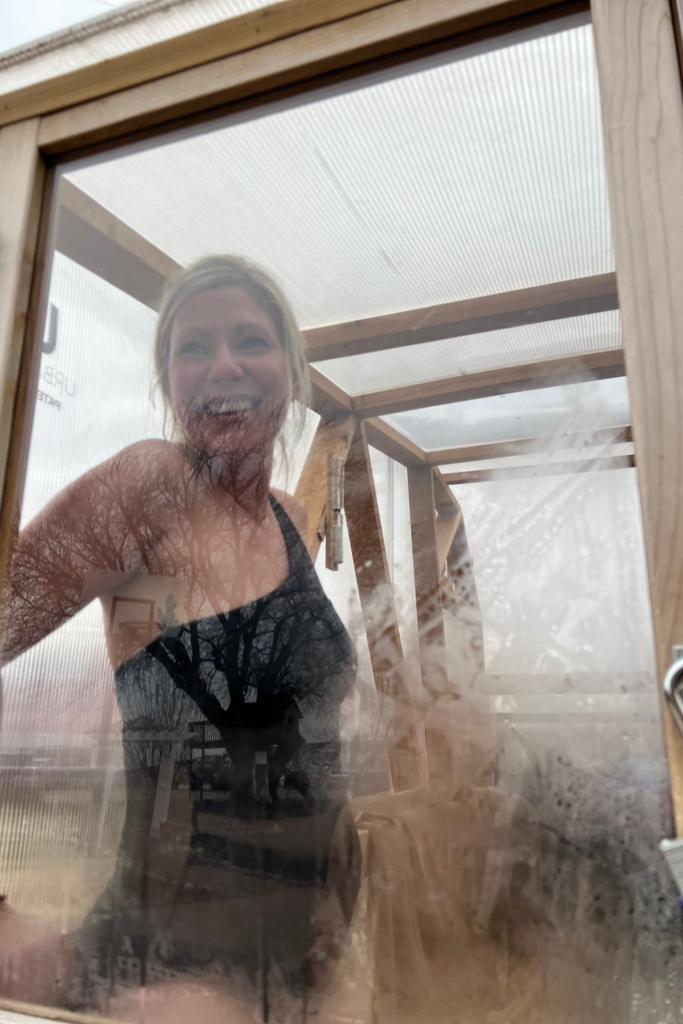
4. Improving Mental Clarity and Mood
The exposure to extreme temperatures releases endorphins, known as the “feel-good” hormones, which can help combat stress, anxiety, and depression. Additionally, the cold shock improves alertness, sharpens focus, and clears mental fog, making it an effective practice for boosting both mood and mental clarity.
5. Better Sleep and Relaxation
The heat of the sauna relaxes tense muscles and calms the nervous system, promoting deep relaxation. Once followed by a cold plunge, the body experiences a cooling effect that can trigger sleep-inducing responses, leading to better quality sleep and deeper rest at night.
6. Increased Metabolism and Fat Burning
Switching between hot and cold temperatures can also stimulate metabolism. Cold exposure forces the body to work harder to maintain its core temperature, increasing calorie expenditure and activating brown fat, which plays a role in burning energy. Over time, this can lead to improved fat-burning potential.
7. Mimics Exercise and Benefits of Cardiovascular Workout
When it comes to the health benefits of a regular sauna routine, longevity expert Peter Attia, M.D. says “When your heart rate gets up to 150 beats per minute in a sauna, that tells you something is going on. The cardiac output necessary to do that, presumably from the standpoint of a cooling need and or a metabolic need, that’s pretty significant for an adult.” Read more about this discussion.

Top Health Benefits from your Sauna:
Improved Circulation – Heat causes blood vessels to dilate, enhancing circulation and oxygen flow to tissues.
Detoxification – Sweating helps eliminate toxins and heavy metals from the body.
Muscle Recovery – Heat relaxes muscles, reducing soreness and aiding recovery after exercise.
Stress Relief – Saunas promote relaxation, reduce cortisol levels, and release endorphins.
Boosted Immune System – Regular sauna use can increase white blood cell production, strengthening the immune response.
Steam- Steam from the sauna can help with relief from congestion, cough or cold symptoms.
Community– Gathering in a sauna fosters shared relaxation, open conversation, and a sense of togetherness that supports mental health and emotional resilience. Studies show that social connection boosts immunity, reduces stress, and can even lengthen lifespan, making communal sauna an experience that benefits the mind, body, and spirit.
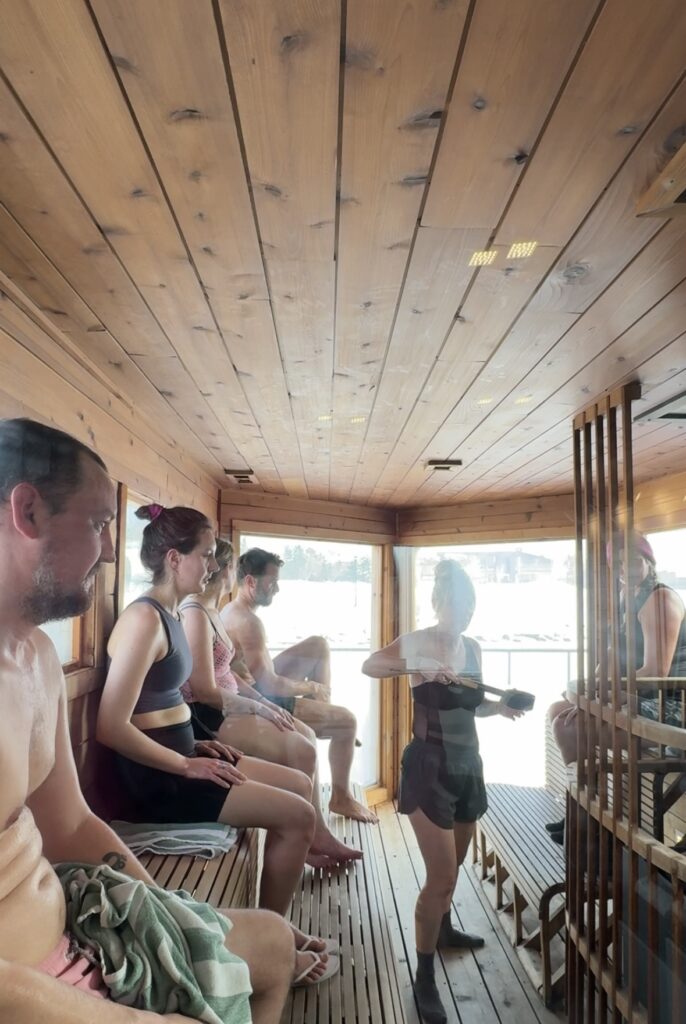
What really happens when you decide on Contrast Therapy
1. Increases Longevity
- Regular sauna use (4–7 times per week) has been linked to a 40% lower risk of all-cause mortality in studies from Finland.
- Cold exposure activates genes associated with cellular repair and longevity, potentially slowing aging.
2. Reduces Risk of Alzheimer’s & Dementia
- A 20-year Finnish study found that frequent sauna use reduced the risk of Alzheimer’s by 65%.
- Heat exposure promotes the release of BDNF (Brain-Derived Neurotrophic Factor), which supports neuron repair and cognitive function.
- Cold therapy may reduce neuroinflammation, a major factor in cognitive decline.
3. Improves Mental Health (Anxiety & Depression)
- Heat stress releases endorphins and serotonin, which improve mood and reduce stress.
- Cold exposure triggers norepinephrine production, which reduces depression and anxiety symptoms.
- Some studies suggest regular sauna use can lower depression rates by 50%.
4. Enhances Cardiovascular Health
- Sauna use mimics the benefits of moderate exercise, lowering blood pressure and reducing the risk of cardiovascular disease by 50%.
- Cold plunges train blood vessels to contract efficiently, improving circulation and vascular health.
- Contrast therapy increases heart rate variability (HRV), a key indicator of heart health.
5. Boosts Circulation & Oxygen Delivery
- Heat causes blood vessels to expand, increasing blood flow and delivering more oxygen to tissues.
- Cold exposure constricts vessels, flushing out waste and improving overall circulation.
6. Reduces Inflammation & Chronic Pain
- Heat reduces chronic inflammation markers, which contribute to arthritis and autoimmune conditions.
- Cold therapy lowers C-reactive protein (CRP) levels, reducing systemic inflammation.
7. Supports Muscle Recovery & Athletic Performance
- Heat shock proteins (HSPs) are released in the sauna, aiding in muscle repair.
- Ice baths reduce soreness by 20–30% in athletes.
- Contrast therapy helps flush lactic acid from muscles, speeding recovery.
8. Enhances Immune System Function
- Sauna sessions increase white blood cell count and improve immune response.
- Cold exposure stimulates brown fat, which helps regulate immunity and metabolism.
9. Improves Sleep Quality
- Heat exposure lowers cortisol levels and promotes deep, restorative sleep.
- Cold therapy can help reset the circadian rhythm, making it easier to fall asleep.
10. Increases Metabolism & Fat Loss
- Sauna use burns up to 600 calories per session due to increased heart rate.
- Cold exposure activates brown fat, which burns white fat for energy and boosts metabolism.
What do I need to take part in contrast therapy?
Two spaces where you can be fully submerged in a hot and a cold environment
1. Sauna
We absolutely love our NorthUp Sauna and guess what? They are made right in our home state of Minnesota!
- The clear poly makes for some magical nights with our kids – watching snow fall above us as we are encased in a warm sauna. This also makes it feel a lot more spacious and less like being in a dark cave. We love our Sunday sauna time watching the sunset go down as we wind down with friends and family.
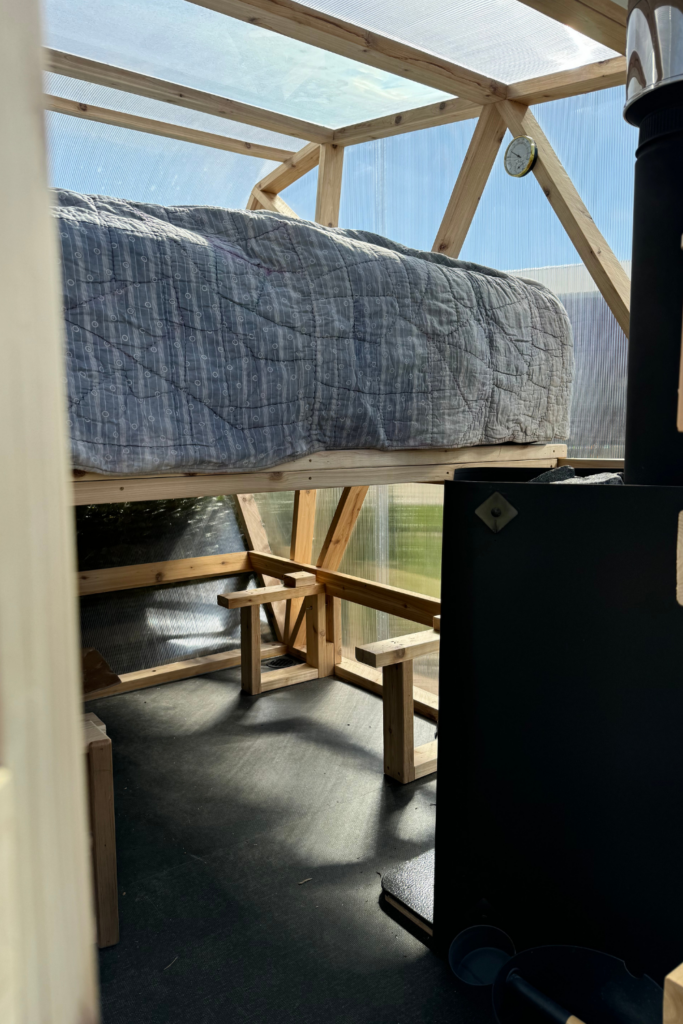
- It doubles as a camper! The kids moved the benches together to make a queen-sized bed and they have been enjoying the last warm-ish nights sleeping outside in it!
- The Heat source comes from the wood-burning stove placed inside + rocks on top that you can pour water on to increase steam
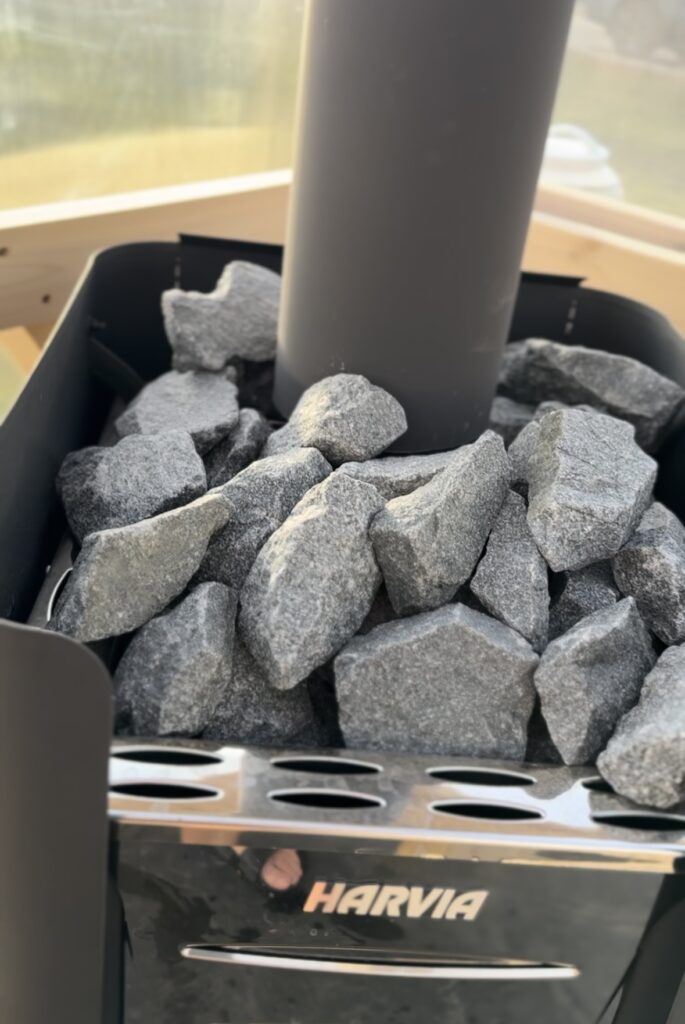
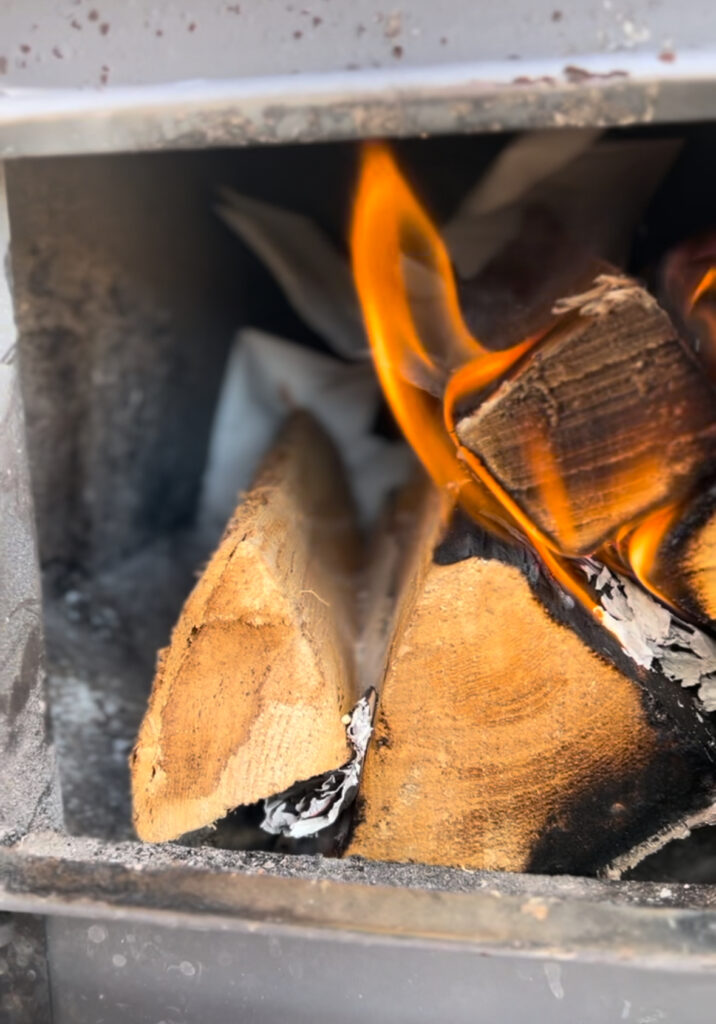
Access their Sauna Catalog here
What’s with the funky Sauna Hats?
Wool sauna hats are traditionally worn to protect the head from the intense heat of the sauna. Since wool is insulating, the hat helps prevent the scalp from overheating while allowing the body to fully enjoy the sauna’s benefits. This insulation maintains a comfortable, steady temperature around the head, which helps avoid dizziness and prolongs the time one can comfortably spend in the heat. Wool’s breathability also makes it ideal, as it can wick away moisture, ensuring comfort without trapping sweat. The hat has become a ritualistic accessory in sauna culture, combining practicality with tradition.
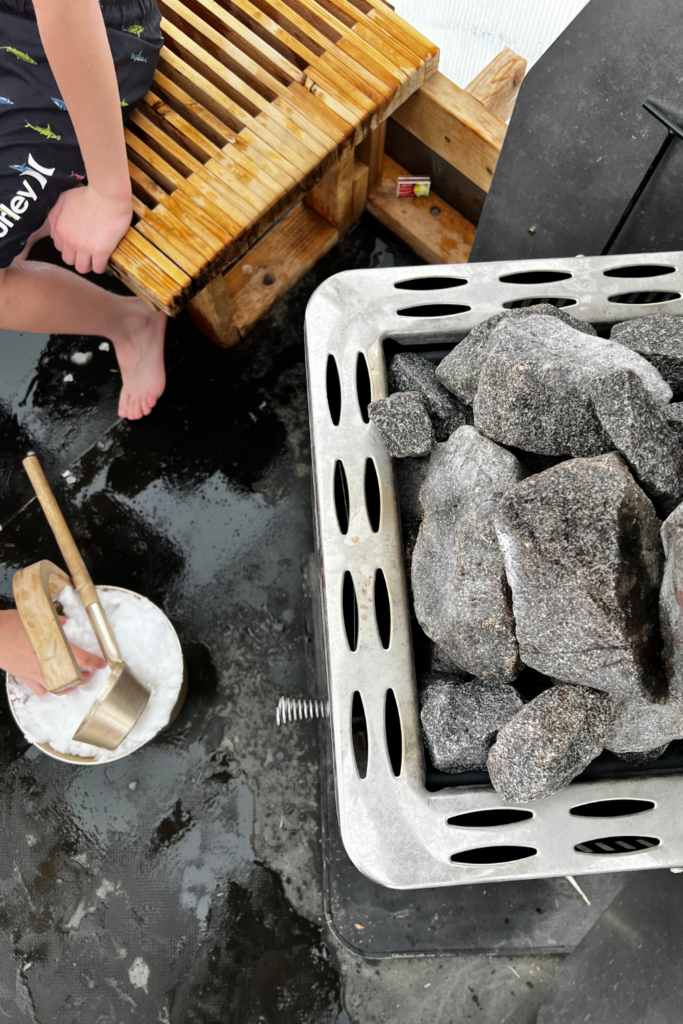
2. Tub for your cold plunge
We got our tub from Behlen Country! It’s durable, large enough to sit in comfortably, and we can station it just a few steps away from our sauna. It keeps our water at the temperature where it needs to be throughout this process – we use a thermometer to make sure the water stays between 50°F and 60°F (10°C to 15°C).
We use a floating thermometer in the cold plunge pool to identify temperatures.
Check out their tub options here
Is contrast therapy safe for my kids?
Yes, kids can participate in sauna and cold plunge practices, but with caution and certain modifications. Children’s bodies respond differently to heat and cold, so shorter durations and lower temperatures are usually recommended. Here are some guidelines:
- Sauna:
- Keep the temperature lower than typical adult sessions, around 60-70°C (140-158°F).
- Limit time in the sauna to 5–10 minutes, especially for younger children, and ensure they stay hydrated.
- Start slowly with shorter sessions and gradually build up tolerance over time.
- Cold Plunge:
- Cold plunges should be brief, generally under 15–30 seconds, as kids’ bodies cool quickly.
- Ensure the water isn’t too cold, ideally above 10°C (50°F), to avoid shocking the system.
- Have them immediately warm up afterward, either by wrapping in a towel or returning briefly to the sauna.
- Supervision: Always supervise kids in both the sauna and cold plunge, watching for any signs of discomfort.
When done mindfully, these practices can introduce kids to health benefits like relaxation and improved circulation.

Questions People are asking about temperature therapy
What is the ideal temperature for a sauna and cold plunge?
For saunas, the temperature typically ranges from 150°F to 195°F (65°C to 90°C). Cold plunges should be between 50°F and 60°F (10°C to 15°C) for maximum effectiveness.
How long should you stay in a sauna and cold plunge during contrast therapy?
Typically, you should stay in a sauna for 10-20 minutes and in the cold plunge for 2-5 minutes. It’s recommended to alternate between the two for 3-4 rounds for maximum benefits.
Is contrast therapy safe for everyone?
While generally safe for most people, contrast therapy is not recommended for individuals with heart conditions, high blood pressure, or pregnancy. Always consult a healthcare professional before beginning any new wellness routine.
How many times per week should I do contrast therapy?
For best results, many experts suggest 2-3 sessions per week. However, this may vary based on individual tolerance and goals.

Can contrast therapy help with weight loss?
Yes, the cold plunging aspect of contrast therapy can boost metabolism and activate brown fat, aiding in fat-burning processes. However, it should be used alongside a healthy diet and regular exercise.
Is “Contrast Water Therapy” and a “Contrast Bath” the same thing?
This is another form of contrast therapy with the same idea but instead, you are moving between two baths with cold and hot water. This hot-to-cold shock will provide you with almost the same benefits – the sauna is an extra help to your respiratory system!
I’m just starting out – what steps can I take to ease into this process?
Before we had our sauna and tub I started this process by taking a cold bath in our bathroom. To get your body used to the changing temperatures, you can start out alternating from a hot to cold shower.
Pin this for later!

Resources to help you dig deeper
- Cardiovascular and Other Health Benefits of Sauna Bathing by Mayo Clinic
- Association between Sauna Bathing and Fatal Cardiovascular and All-Cause Mortality Events by Jama Internal Medicine
- Saunas and Social Connection by Global Wellness Summit
Immune-boosting recipes to complement your contrast therapy
- Lemon, Ginger, and Honey Tea
- Fermented Honey Garlic
- How to make Elderberry Fire Cider
- Homemade Elderberry Gummies
I’d love to hear your thoughts and your contrast therapy experience! Comment on our socials and let me know your thoughts on this beneficial practice!

Affiliate Disclosure & Content Disclaimer
This post may contain affiliate links from a paid sponsor, Amazon or other program. When you use these links to make a purchase I earn a small commission at no extra cost to you. This allows me to continue creating the content that you love. The content in this article is created for information only and based on my research and/or opinion.
Emily T.
DAILY INSPIRATION ON THE GRAM @hearty.sol
it's hip to be square!
View comments
+ Leave a comment